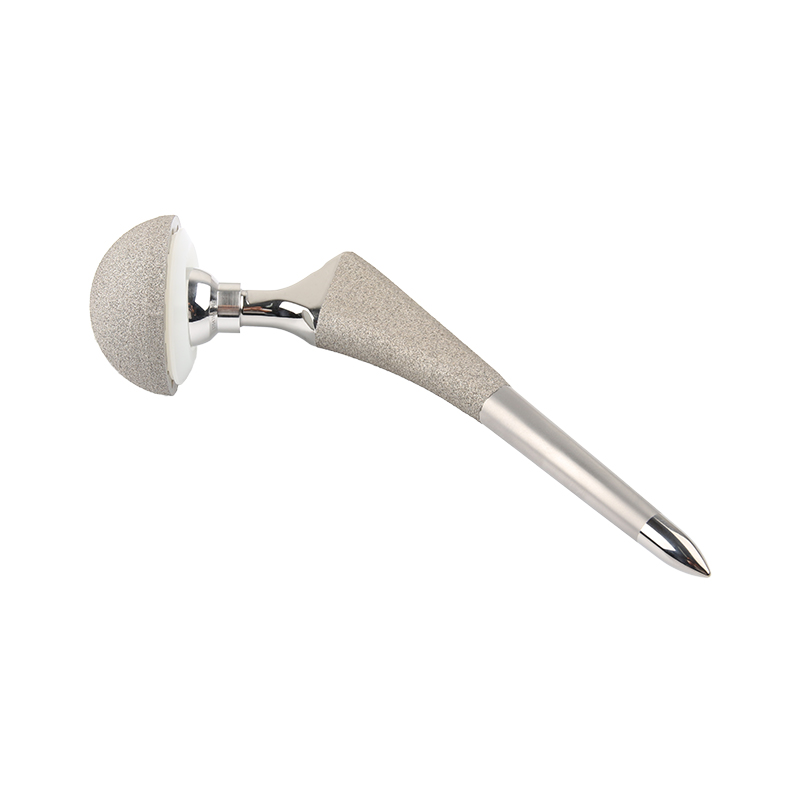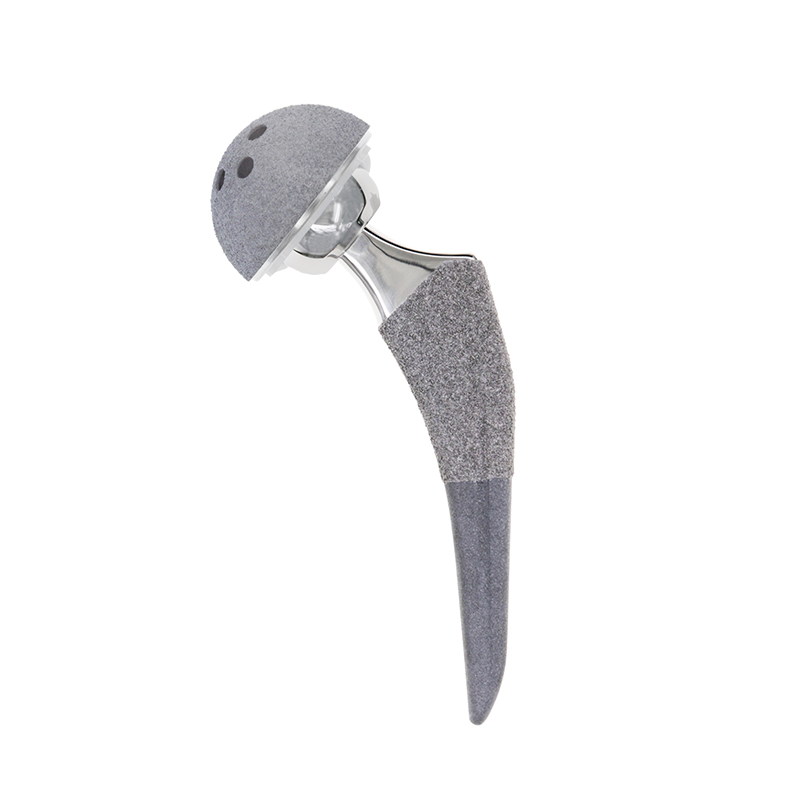Best selling high quality total hip joint prosthesis instruments replacement
FDS Femoral Stem
● Standard 12/14 taper
● The offset increases gradually
● 130° CDA
● Short and straight stem body

Proximal part with TiGrow technology is conducive to bone ingrowth and long-term stability.
The middle part adopts traditional sand blasting technology and rough surface treatment to facilitate the balanced transmission of the force on the femoral stem.
Distal high polish bullet design reduces cortical bone impact and thigh pain.

Tapered neck shape to increase range of motion

● Oval + Trapezoidal Cross Section
● Axial and Rotational Stability

Double taper design provides
three-dimensional stability

Implant Hip Prosthesis Indications
The hip implant is a medical device used to replace a damaged or diseased hip joint, relieve pain and restore mobility. The hip joint is a ball and socket joint that connects the femur (thigh bone) to the pelvis, allowing for a wide range of motion. However, conditions such as osteoarthritis, rheumatoid arthritis, fractures or avascular necrosis can cause the joint to deteriorate significantly, leading to chronic pain and limited mobility. In these cases, a hip implant may be recommended.During surgery, the damaged portion of the hip joint replacement, including the femoral head and acetabulum, is removed and replaced with prosthetic components made of metal, plastic, or ceramic. The type of implant used may vary based on factors such as the patient's age, health, and surgeon preference.
Total hip replacement is often recommended for patients with severe hip pain or disability from conditions such as osteoarthritis, rheumatoid arthritis, necrosis of the femoral head, congenital hip deformities, or hip fractures. It is considered a very successful procedure, with most patients experiencing significant pain relief and improved mobility postoperatively. Recovery from hip replacement surgery includes a period of rehabilitation and physical therapy to restore hip strength, mobility, and flexibility.
Most patients are able to return to normal activities, such as walking and climbing stairs, within a few weeks to months after surgery. Like any surgical procedure, total hip replacement carries certain risks and complications, including infection, blood clots, loose or dislocated implants, nerve or blood vessel damage, and joint stiffness or instability. However, these complications are relatively rare and can usually be managed with proper medical care. Be sure to consult with a qualified orthopedic surgeon to determine whether total hip replacement is the right treatment option for your specific situation and to discuss any questions or concerns you may have.
Implant Hip Joint Clinical Application

FDS Femoral Stem Specification
| Size | Stem Length | Distal Diameter
|
Cervical Length
|
Offset
|
CDA
|
| 1#
|
142.5mm
|
6.6mm | 35.4mm | 39.75mm |
130°
|
| 2#
|
148.0mm
|
7.4mm | 36.4mm | 40.75mm | |
| 3#
|
153.5mm | 8.2mm | 37.4mm | 41.75mm | |
| 4#
|
159.0mm | 9.0mm | 38.4mm | 42.75mm | |
| 5#
|
164.5mm | 10.0mm | 39.4mm | 43.75mm | |
| 6#
|
170.0mm | 10.6mm | 40.4mm | 44.75mm | |
| 7#
|
175.5mm | 11.4mm | 41.4mm | 45.75mm | |
| 8#
|
181.0mm | 12.2mm | 42.4mm | 46.75mm |
Hip Joint Implant Introduction
Hip Joint Prosthesis Portfolio: Total Hip and Hemi Hip
Primary and Revision
Hip Joint Implant Friction Interface: Metal on highly cross-linked UHMWPE
Ceramic on highly cross-linked UHMWPE
Ceramic on ceramic
Hip Joint System Surface Treatment: Ti Plasma Spray
Sintering
HA
3D-printed trabecular bone
Hip Implant Acetabular Components

Hip Implant Femoral Head










